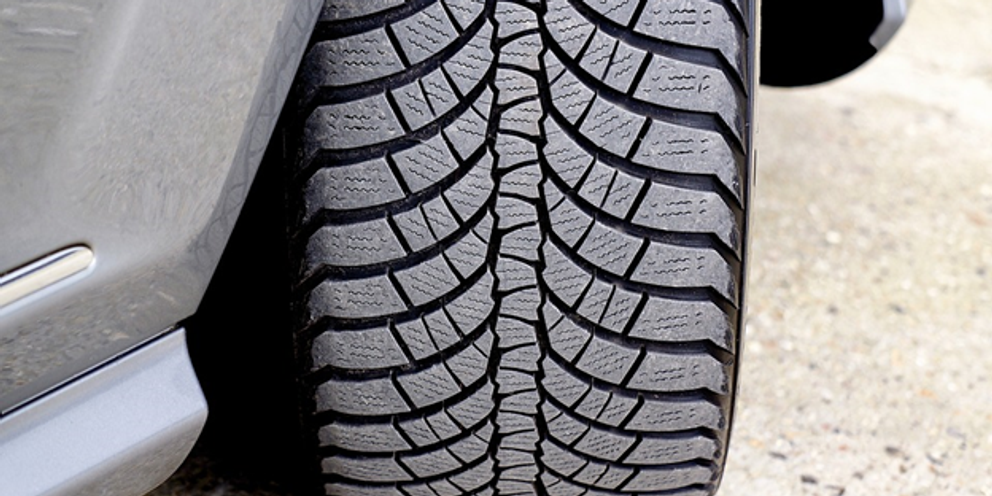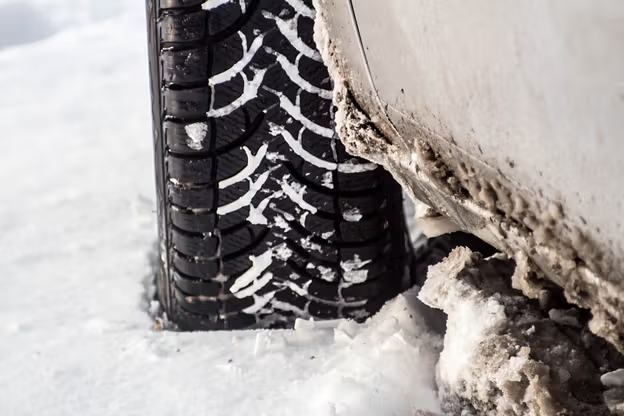
All-Weather Tires Vs. All-Season: What’s the Difference?
Written By John Linden
As we are solidly in the fall now, those who live in the northern states have probably started thinking about the inevitable snow of the winter. For those in places that experience cold winters, the onset of fall means thinking about changing your car’s tires to handle the snow.
Many people rely on their “all-season” branded tires to get them through the 4 seasons and don’t change to dedicated winter tires. Unfortunately, even though they are called “all-season,” all-season tires do not handle well in the winter. All-season tires are good for a wide range of driving conditions but they lack the thickness and deep treads needed for good winter driving.
Fortunately for those who don’t like changing their tires, a new subset of all-season tires called “all-weather” tires have emerged. All-weather tires are distinguished by the unique 3-peak mountain snowflake pictogram on the sidewalls which indicates that the tire has at least 110% the traction of a standard all-season tire (for the curious, the standard used is ASTM E1136-14).

Let’s talk about the history of these two kinds of tires to better appreciate their differences.
Large parts of Europe have long standing laws that require drivers to change their tires during winter to get better traction in the snow and rain. Tires that meet these higher winter standards are marked with the 3-peak mountain snowflake symbol. Due to these laws, it has been the norm in Europe to have two sets of tires, a summer set (May-October) and a winter set (November-April). Summer tires are usually thinner and have less tread so they do not handle in the snow very well, whereas winter tires are thick and tough but can’t handle the heat of the summer. Summer tires are switched for winter tires when the cold starts and vice versa when winter goes away.
Recently, tire manufacturers in Europe wanted to build a tire that could be used year-round, which led to the birth of the all-weather tire. Now, these all-weather tires have come to America, where they are distinguished from traditional American “all-season” tires by their higher winter traction rating and 3-peak mountain snowflake symbol.
All tires designed for winter use have this special symbol, but all-weather tires do not have to be switched out during other seasons. So if we wanted to be accurate, then all-weather tires should be labeled true “all-season” tires and current all-season tires should be called “3-season tires” or something similar. We know this terminology is a bit confusing, but this slightly convoluted naming scheme is just a product of the history and regulations surrounding all-season and all-weather tires.
The key difference between American all-season tires and all-weather tires is that all-weather tires have the performance of all-season tires on both wet and dry roads but also have winter tire levels of traction for the cold months. Ameri can all-season tires usually do not have the thickness and tread pattern to handle true winter conditions so they slip easily in the snow and ice. Conversely, dedicated winter tires are usually made from rubber polymers that will wear quicker if used during the hotter months. Also, there is an inherent trade-off between wet-traction and cold-traction meaning if you want more of one you have to give up more of the other.
Manufacturing a tire that could handle wet surfaces and be suited for cold weather driving was the key to making all-weather tires that can be used year-round and still be approved in places with winter tire regulations. All-weather tires have everything you need for year-round performance; tread pattern, rubber compound, and proper tread depth. These features give it a more well-rounded performance profile than traditional all-season tires.
So which type of tire is right for you? If you need just one set of solid tires and live in a place that experiences true winter conditions every year, then all-weather tires are probably the best choice because of their verified winter performance. Alternatively, if winters where you live are characterized by near-freezing temperatures and sporadic bouts of rain, then one of the many available all-season tire brands is an excellent choice. If you need true winter tires capable of cutting through slush and black ice, your best bet may be to stick with a separate set of winter tires.
So why should you get all-weather tires? All-weather tires save you the hassle of having to change out your tires every year and are much better than traditional all-season tires at winter driving. Also, winter tires normally require you to buy a new set of rims to handle their pressure. All-weather tires work with the original equipment rims and the same tire pressure management systems so you can keep the original specs on your car.
All-weather tires do have a few downsides though. All-weather tires usually don’t last as long as seasonal tires. This isn’t because all-weather tires are lower quality, but the fact that you don’t change them out means they get more wear over a year-long period. Due to this shortcoming, most all-weather tires have shorter tread life warranties. Strictly speaking, winter tires outperform all-weather tires in terms of sheer cold-weather performance, but all-weather tires do much better than all-season tires in both warm, wet, and cold conditions.
Having tires suited for all weather conditions is an important part of driving. You would not wear shorts or a t-shirt during the winter, so why you use all-season tires that are not designed for cold-weather usage? So if you are looking to change tires this winter, consider picking up a set of all-weather tires.
Featured Image Credit: AutoPhotography / Pixabay
In Post Image Credit: wyncel / Pixabay
Updated